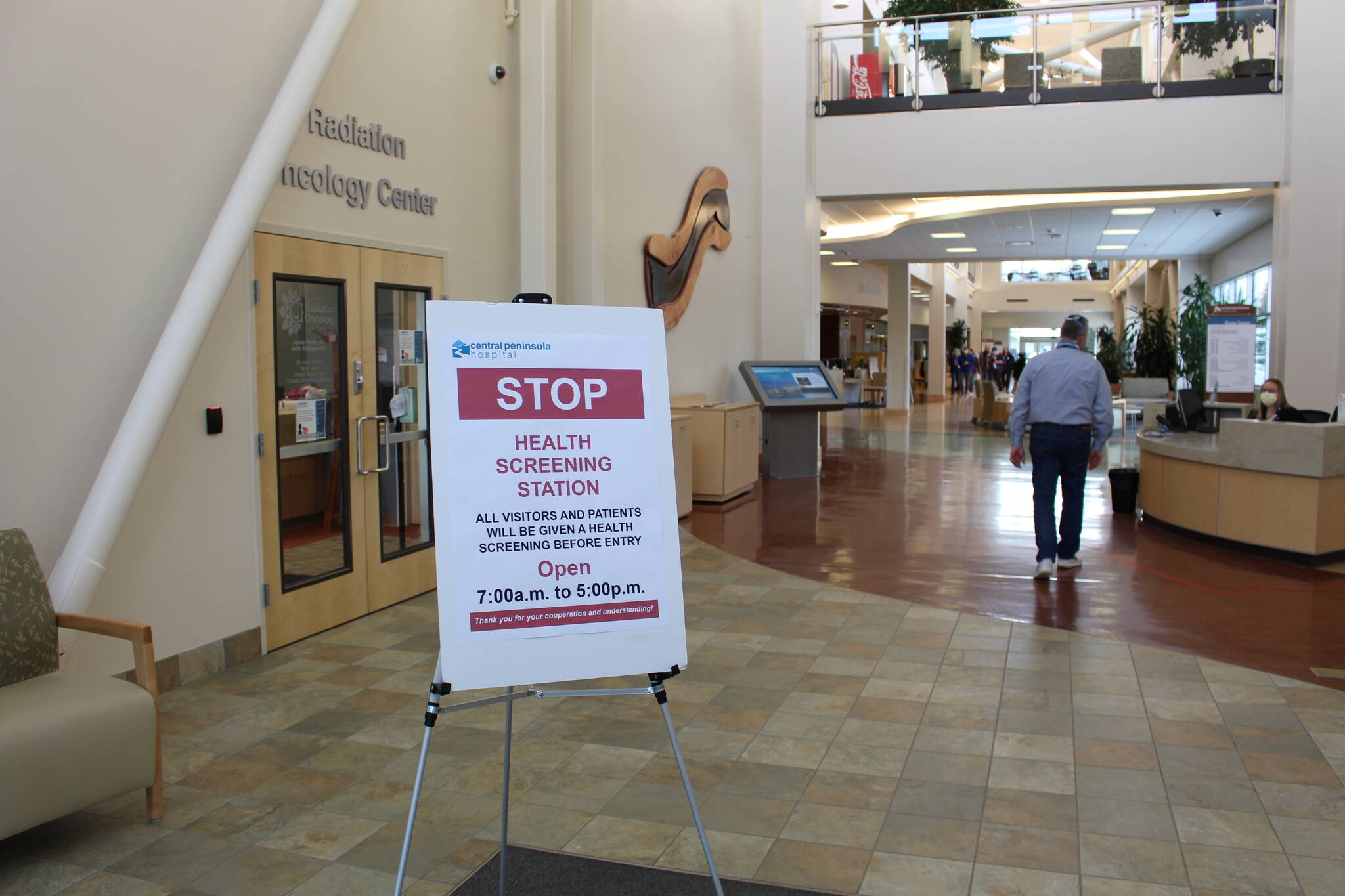As COVID-19 hospitalizations rise statewide the health care sector is being increasingly stretched thin, health officials said this week.
Central Peninsula Hospital was at a reported 110% occupancy rate Wednesday, with 17 COVID-positive inpatients, six in the intensive care unit and one on a ventilator, according to the facility’s web page.
Bruce Richards, the external affairs director of CPH, said Thursday that around 33% of all inpatients are COVID positive, putting strain on the health care professionals who work at the hospital. One day last week, he said, the COVID and non-COVID ratio rose to approximately 50%.
“It’s a significant portion of the hospital occupancy,” Richards said Thursday.
When CPH is at full capacity employees work longer hours, float to different wards, help clean personal protective equipment and even double up non-COVID patients in rooms to maximize hospital space, Richards said. He described the scenes as “controlled chaos.”
Chief Medical Officer Dr. Anne Zink said during a press briefing Thursday that health care burnout is happening statewide as COVID continues to circulate through communities.
“I remember this one time we had a big bus wreck, everyone came in to help out,” she said. “Or like the earthquake, everyone showed up at the hospital to help out and be available, and it was great. But you can’t do that for month after month after month.”
Zink said hospital staff in Alaska is limited by the number of COVID patients requiring critical care.
“(There are) only so many hours in a day, and only so much work that one individual nurse can do,” she said. “On top of it, family and friends can’t be there in the same sort of way. … So instead of just being able to provide hospital care, that nurse may also be rotating the patient and be holding up the iPad so that they can talk to their loved ones.”
As of Thursday there were 206 COVID-related hospitalizations statewide, with 94 of 115 adult ICU beds occupied. In the Gulf Coast — which includes the Kenai Peninsula — 22 people were hospitalized with COVID and nine of 13 total adult ICU beds were full.
According to the latest state epidemiology report, in July data showed that people who were not fully vaccinated were hospitalized for COVID at a rate that was 8.8 times higher than those who were fully vaccinated.
Officials said Thursday that vaccinated individuals who are hospitalized tend to be older than unvaccinated individuals who are hospitalized. The epidemiology report stated that the median age among fully vaccinated people in July was 71.7 years, while the median age for those not fully vaccinated the same month was 57.7 years.
“Everyone is tired of COVID,” Richards said Thursday. But, he said, most people go without seeing the virus right in front of them every day, while health care workers have to work overtime in hospitals that sometimes see upward of 50% of patients suffering from COVID.
“They’re a resilient group,” Richards said.
The Department of Health and Social Services announced another 846 new positive COVID cases Thursday.
The case count included 21 in Kenai, 15 in Soldotna, eight in Homer, two in Anchor Point, and one each in Nikiski and Sterling.
According to state data, 56% of all Alaskans 12 and older were fully vaccinated against COVID-19 as of Thursday, while another 61.5% had received at least one shot.
In the Kenai Peninsula Borough, 47.4% of people had been fully vaccinated and another 51.2% had received at least partial dosage.
Zink reiterated Thursday that medical professionals have had to limit the comprehensive care they’re accustomed to while the hospitals fill up.
“I think morally that’s really hard for providers,” she said Thursday. “They want to provide the standard of care that they’re used to doing. They’re just being stretched thinner and having to work in different ways.”
Reach reporter Camille Botello at camille.botello@peninsulaclarion.com.

